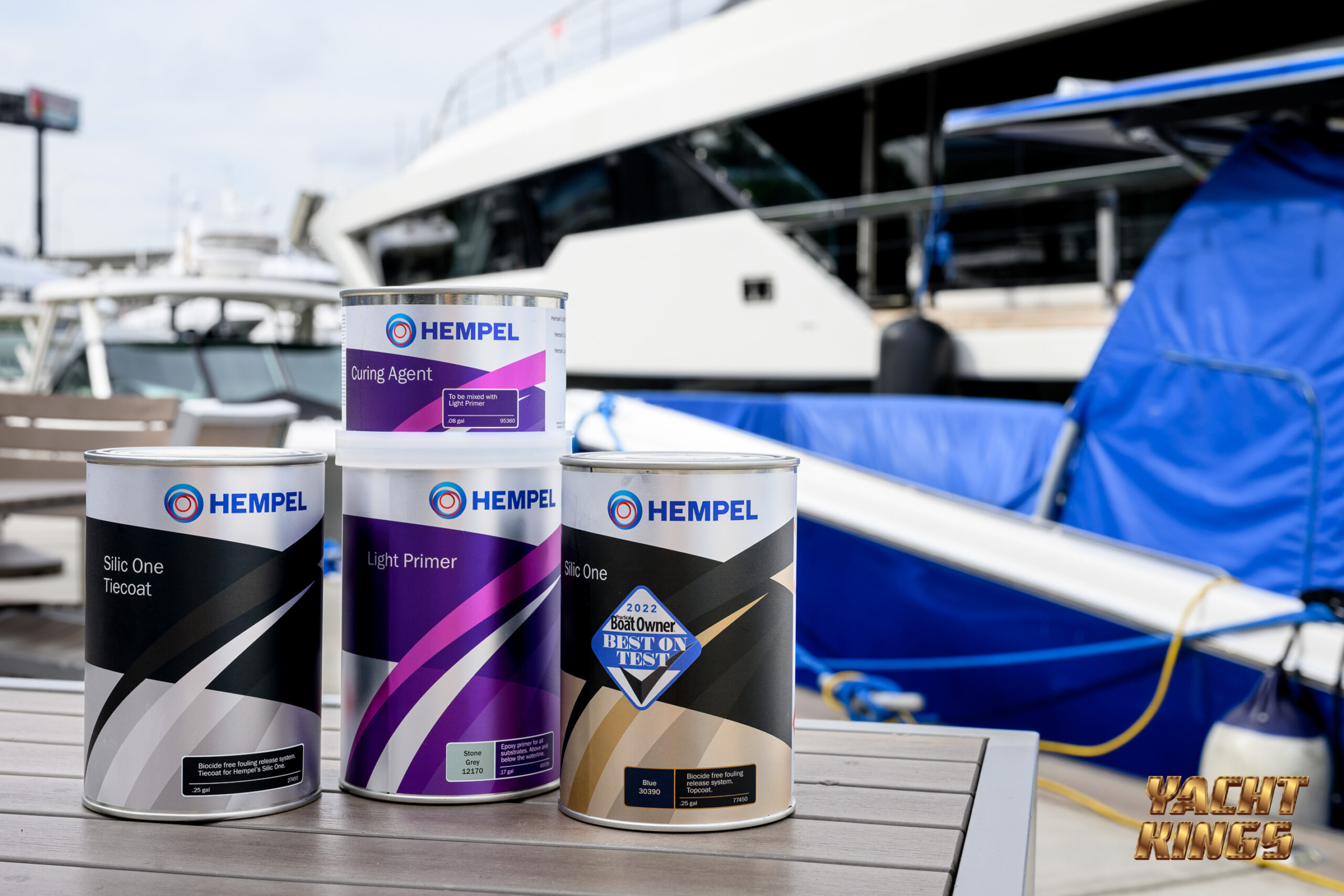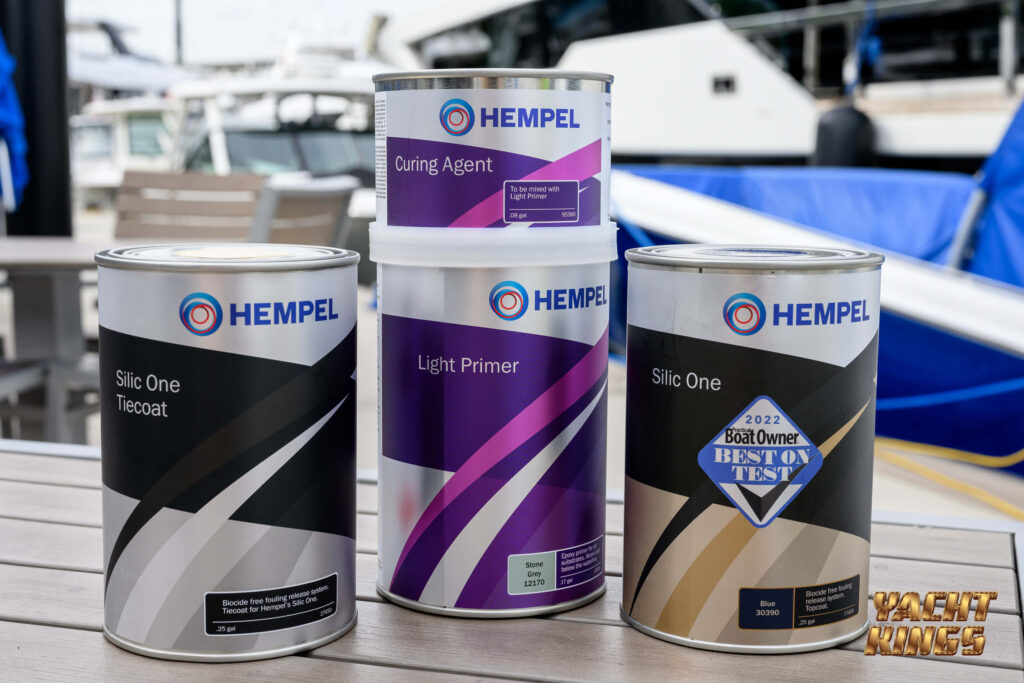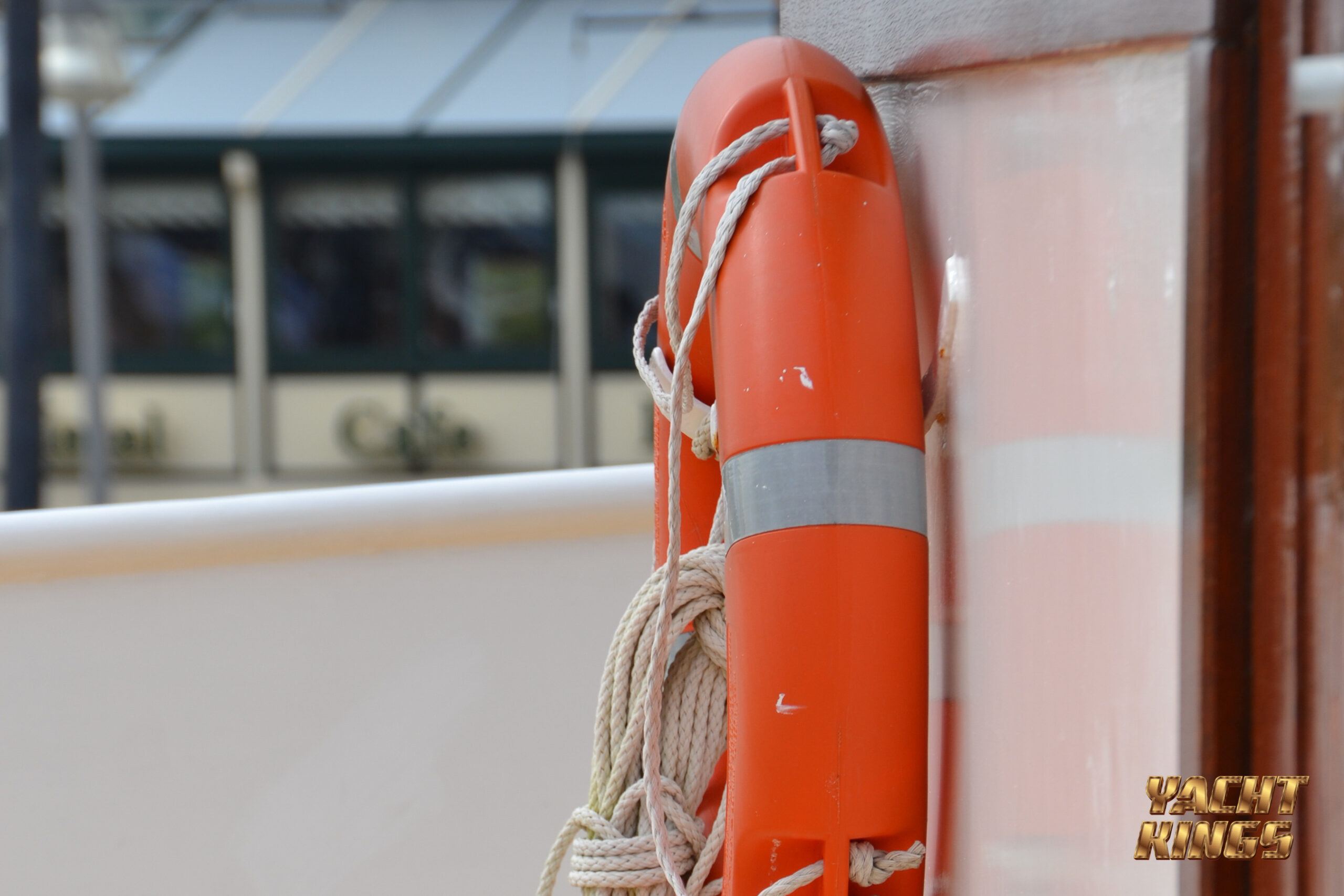- Technology and Innovation
Discover the Benefits of Hempel Silic One for Effortless Hull Protection

Maintaining a boat’s hull is crucial for ensuring performance, durability, and fuel efficiency. One of the most efficient solutions on the market today is the Hempel Silic One Fouling Release System. Designed to reduce maintenance needs and increase overall vessel performance, Silic One stands out due to its ability to prevent fouling on the hull, leading to a cleaner and smoother ride through the water. Best of all, transitioning to this system is a straightforward process, even if your boat has previously been coated with traditional antifouling paint.
Switching to Hempel Silic One from Antifouling
If your boat’s hull is already coated with antifouling and it’s still in good condition, Hempel has made it easy to switch to their Silic One system without needing to strip down to bare hull. The process involves using Hempel’s Conversion Primer, a two-component epoxy primer that serves as an intermediary layer between the existing antifouling and the Silic One system.
Surface Preparation
The first step in this transition is assessing the condition of your current antifouling coating. To do this, use a metal scraper to test whether the old antifouling is still well-adhered. If any areas are found to be loose or brittle, they must be removed. Once you’ve ensured the antifouling layer is in good condition, wet sanding with abrasive paper (P120) is necessary to prepare the surface for the new coating. After sanding, rinse the hull thoroughly with fresh water and allow it to dry completely.
Application of Conversion Primer
Once the surface is prepared, it’s time to mix and apply Hempel’s Conversion Primer. This primer is designed to bond directly with the existing antifouling and provide a smooth, stable surface for the Silic One system to adhere to. It’s important to mix the two components of the primer thoroughly until you achieve an even consistency. Be mindful of the low viscosity of this product – runs or sags in the primer should be brushed out immediately to maintain an even coating.
With a pot life of eight hours at 20°C (68°F), the Conversion Primer provides ample time for application. However, note that thinning is not recommended, and you should only apply it when the temperature is above 5°C (41°F). After the Conversion Primer has dried, it’s crucial to overcoat with Silic One Tiecoat as soon as the surface is dry to the touch.
Completing the Transition with Silic One
The Silic One system works as a fouling release coating that resists marine organisms, keeping your hull cleaner for longer. After applying the Conversion Primer and ensuring it is fully dry, you should apply the Silic One Tiecoat. Full coverage is essential to ensure the next layer adheres properly. After 48 hours, clean the surface with Hempel Pre-Clean 67602, rinse it with fresh water, and allow it to dry before continuing.
If you are transitioning from a bare boat or a new boat without an epoxy coating, you will need to apply Hempel’s Light Primer or Silic One Tiecoat. The surface preparation involves cleaning with detergent, sanding with dry abrasive paper (P120), and rinsing before applying the primer layers. As with antifouling, it’s essential to follow all drying and overcoating instructions precisely to ensure the best results.
Conclusion
Hempel’s Silic One system offers an efficient, eco-friendly, and durable solution to hull fouling problems, whether you’re converting from an antifouling system or starting fresh. By using Hempel’s Conversion Primer, the switch is easy and ensures long-term protection. The proper application process not only protects the hull from fouling but also improves overall vessel performance. With this system in place, you can look forward to reduced drag, better fuel efficiency, and minimal hull maintenance in the future.















